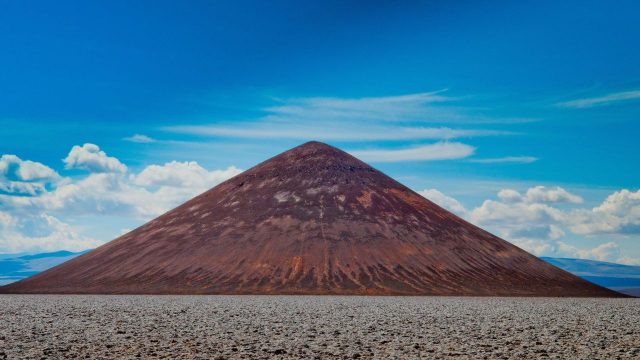
A vast high plateau in the far northwest of Argentina, the Puna de Atacama is “how the planet looked before us, almost before anything, the Earth’s skeleton laid bare”, said Stanley Stewart in the Financial Times.
It is contiguous with the Atacama Desert in Chile, but receives a bit more rain, and far fewer visitors. Covered in volcanoes, bubbling hot springs, steaming fumaroles and immense salt flats, the landscape here is “dramatic and surreal”. It unfolds across “unfathomable” distances and is wreathed in “profound” stillness and silence. It feels harsh and alien – Martian, perhaps – and yet the Puna is astonishingly beautiful, “streaked with colour as if by a child let loose with crayons – carnelian and rust reds, magnesium greys, chalky white, obsidian black, malachite green”.
The nearest airport is in Salta, a city known for its gaucho culture and for the high-altitude wines of the Calchaqui Valley. On a recent trip, my guide and I drove out in a 4×4 from there to Tolar Grande, deep in the Puna. Perched at 3,508 metres above sea level, this small settlement, home to 150 people, feels like “a Wild West town”, with its wide streets of low adobe buildings. From there, we went on to Antofalla and El Peñón, other tiny towns with “delightful” guesthouses. Among the extraordinary sights along the way were flocks of flamingos stepping “delicately” through the saline waters of the Laguna Grande; the Cono de Arita, a black pyramid of magma that seems to hover above the dazzling salt flats of Arizaro; and – outside El Peñón – blocks of pumice “the size of houses”, sculpted into “bizarre” forms by the desert winds.
Finally, we gazed up at the snow-capped, 6,739m peak of Mount Llullaillaco, where in 1999 archaeologists found the mummified bodies of three children, who had been sacrificed in an Inca ritual. They now lie in the museum at Salta – a reminder of a time when the high Andes were a divine realm, from which children such as these were believed not to have truly died, but to be watching the world below.
The ‘dramatic and surreal’ landscape features volcanoes, fumaroles and salt flats






